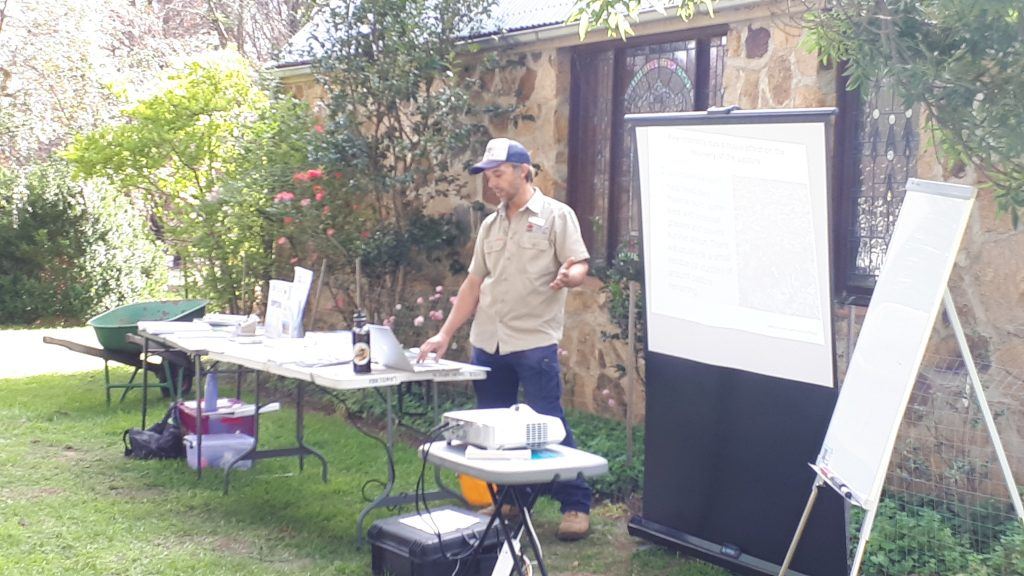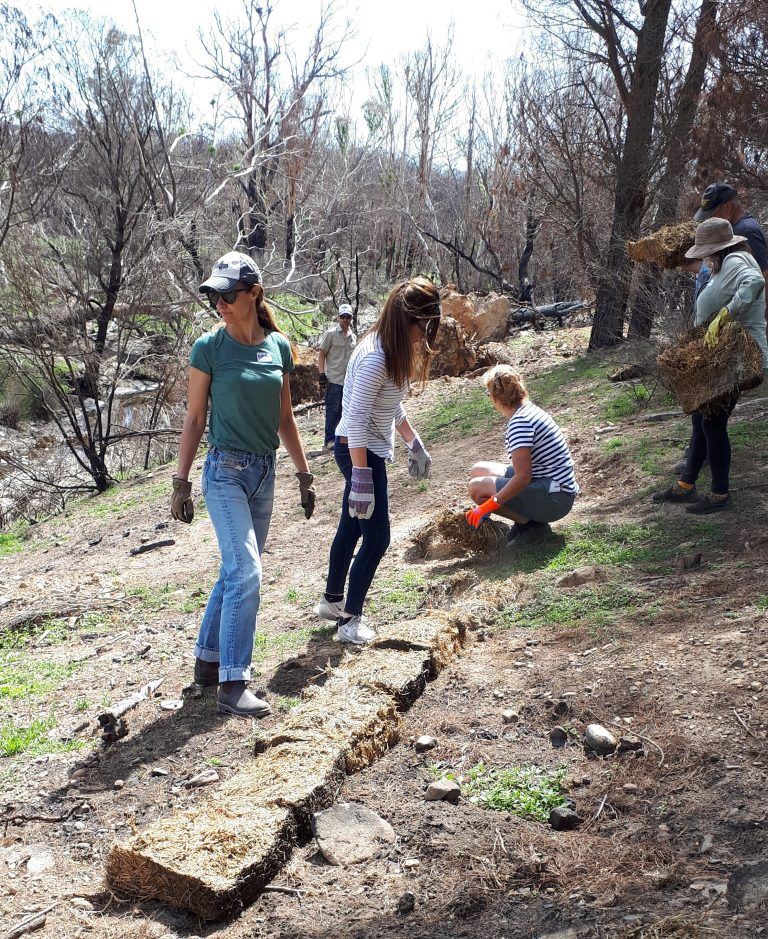This workshop examined rural landscape issues emerging as a result of prolonged drought and recent bushfires. The workshop was held in Bombay, just south of Braidwood.
Led by Andy Taylor from South East Local Land Services (SELLS) in Braidwood, the workshop was an opportunity for local farmers learn about actions they can take to mitigate the effects of erosion. We also learnt from Judy Carmody about the support available from the Rural Mental Health Resilience Program and Felicity Sturgiss, Senior Land Services Officer (SELLS), talked to us about ways to support wildlife after fires.

Andy Taylor has written a handy guide to managing erosion after fire.
Jane Ambrose from Upper Shoalhaven Landcare talked about Landcare in the area and how to get involved in the projects they run. Jane kindly agreed to share her notes from the workshop.
Key points from the workshop were:
- The scale of the drought and fires has made erosion events more likely due to lack of ground cover. A question asked at the workshop was “How do I to prioritise erosion control activities?” Andy suggests using Six Maps to calculate the catchment size above an erosion point and prioritising groundworks on the gullies with the largest catchment. You can slow water higher in the landscape by using grazing management to maintain ground cover and sediment traps to slow water runoff.
- Understanding your soil type is vital for remediating erosion. Around the Bombay area, where the soils are sodic and highly erodible, protecting the topsoil is critical to prevent erosion. Information about your soil type can be looked up on eSpade along with soil testing results for your area. Here is the eSpade link and an example of the soil report you can get from eSpade.
- Dams and rivers away from the fire grounds have been adversely affected by debris from ash, soil and dung. These contaminants can cause water quality issues for stock, fish and other water users. It is possible to build a sediment trap above a dam using vegetation, rocks or a sediment fence to slow down the movement of water into the dam so that debris is dropped in the trap before the water reaches the dam. This will improve the quality of the water collected in the dam.
- Repairing containment lines created by bulldozers during the fires is important to reduce erosion. Replacing the topsoil with a grader is a good way to start. Mitre and roll over drains can help slow down and divert water in steep sections. Weed free hay bales can also be used as sediment traps to slow water movement.
- Because of the intensity of the recent bushfires, the seed bank in the soil could be depleted. A hot fire can change the soil chemistry including soil pH and soil structure. Generally speaking, native grasses have evolved with fire and will recover better than introduced species of grasses. Perennial grasses with deeper root system can also recover well, depending on how hot the soil surface became. Consider using sterile Rye Corn to help establish groundcover. Rye Corn is a better choice than other exotic species on sites with high conservation values where you don’t want to introduce weeds and new exotic grasses. Branches, jute mesh, rocks and other vegetation can all be used to slow down water and create niches for plants and pastures to establish.

Branches create a planting niche

Using old lucerne hay under jute matting to slow down water

Jute matting with seed spread over the top
Felicity and Andy reiterated the importance of biosecurity when planning erosion works and when feeding wildlife. For example, use straw or other inert materials for erosion management rather than hay or materials containing seed to prevent the spread of weeds. Seek appropriate advice on what to feed wildlife in fire affected areas and avoid feeding meadow hay that could accidentally introduce weeds.
The following are links to more information:
Understanding the impact of the 2020 fires
Building a sediment fence
Pasture recovery after fire
Fire retardant plant list from Yarralumla Nursery (but remember all plants can burn)
Bushfire Customer Care NSW Government
Healing the land techniques for managing erosion workshop summary
The Small Farms Network Capital Region received funding from the Every Bit Counts project. The Every Bit Counts project has been funded by the New South Wales Government through its Environmental Trust.